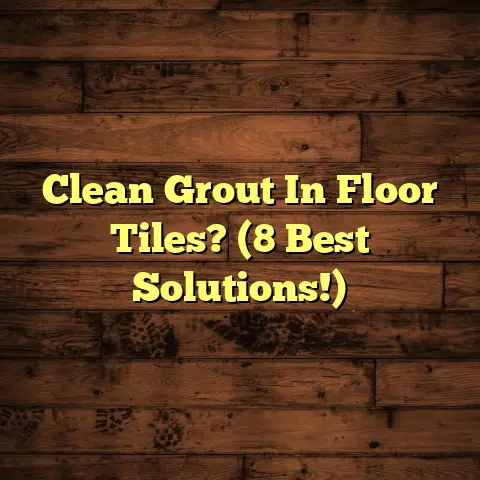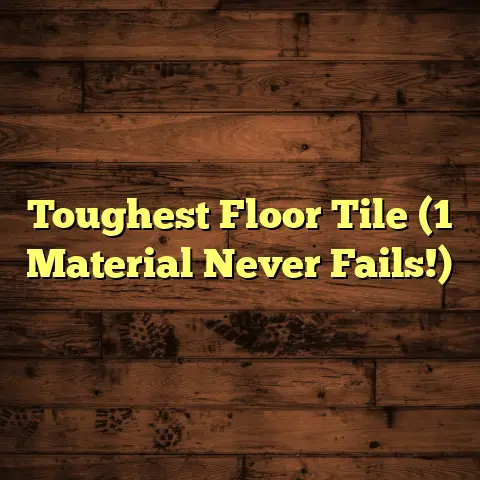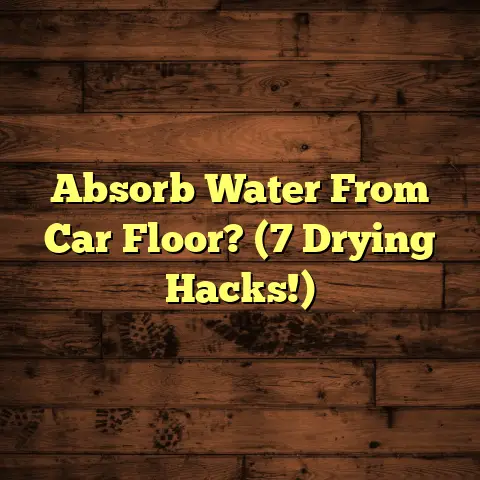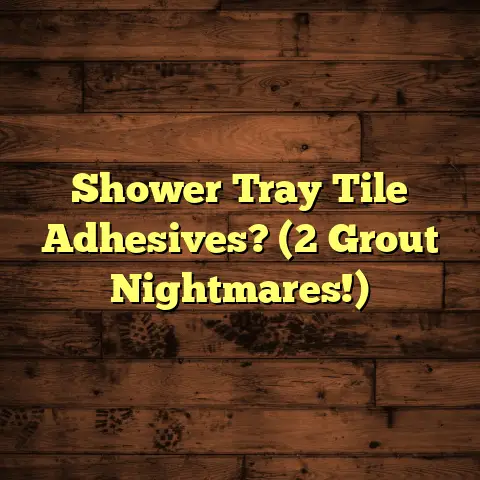Can You Use Swiffer Wetjet On Lvp?
What if you could keep your LVP (Luxury Vinyl Plank) flooring shining and clean without any hassle?
I remember the first time I installed LVP in my home. The sleek look and durability had me excited, but I also knew that maintaining it would be essential. That’s when I started exploring various cleaning methods, including the Swiffer WetJet. I had heard mixed reviews about using it on LVP, so I decided to put it to the test myself.
Can You Use Swiffer WetJet on LVP?
The Short Answer: Yes, you can use Swiffer WetJet on LVP, but there are a few things to keep in mind to avoid potential damage and ensure the best results.
My Experience with Swiffer WetJet on LVP
When I first used Swiffer WetJet on my LVP, I was drawn to its ease of use. Just a quick spray and a couple of swipes were all it took to clean up minor spills and dirt. It felt like a dream come true, especially after the long hours spent installing the flooring.
However, I quickly learned that not all cleaning solutions work well with LVP. The WetJet comes with pre-filled solution bottles, which contain cleaning agents that are safe for many surfaces but may not be ideal for vinyl plank flooring.
Here’s what I discovered:
- Avoid Harsh Chemicals: The cleaning solution in some Swiffer products can contain harsh chemicals that might damage the finish of your LVP over time. It’s essential to check the label and opt for a formula that’s labeled as safe for vinyl floors.
- Test in a Small Area: Before diving into a full cleaning session, I always recommend testing it in a small, inconspicuous area. I did this the first time, and thankfully, there were no adverse effects.
- Use Sparingly: I found that too much moisture can lead to warping or damage in LVP flooring. So, I would spray lightly and use the mop head to pick up most of the liquid.
The Pros and Cons of Using Swiffer WetJet on LVP
Pros:
- Convenience: It’s incredibly easy to use. The ready-to-use format means no need for buckets or additional cleaning supplies.
- Fast Cleaning: For quick cleanups following daily foot traffic or spills, the WetJet is a time-saver.
- Lightweight: It’s easy to maneuver around furniture and tight spaces.
Cons:
- Chemical Concerns: Some solutions may not be compatible with LVP.
- Moisture Control: Overuse can lead to issues.
Tips for Cleaning LVP with Swiffer WetJet
- Choose the Right Solution: Find a cleaner that is specifically designed for vinyl flooring or one that is labeled as safe for all floor types.
- Mop Regularly but Lightly: Frequent cleaning is good, but keep it light on moisture. Use the WetJet once a week or as needed.
- Spot Clean First: For tough stains, I prefer spot-cleaning with a microfiber cloth and a gentle cleaner instead of relying solely on the WetJet.
- Sweep Before Mopping: Always sweep or vacuum before mopping to prevent scratches from dirt and debris.
- Alternate Methods: Sometimes, I switch between using Swiffer and traditional mopping methods (like a damp microfiber mop) to reduce reliance on any one product.
Cost Considerations
While exploring cleaning options, I often think about costs related to my flooring projects. For example, I remember estimating the installation of LVP for a client’s home last summer. Using FloorTally helped me create accurate cost estimates based on local material prices and labor rates.
For that specific project, I calculated:
- Material Costs: Approximately $2.50 per square foot of LVP.
- Labor Costs: Around $1.50 per square foot for installation.
- Total Area: 1,000 square feet.
This brought the total estimated cost to about $4,000, which included waste factors and potential hidden costs like removing old flooring. Having such detailed estimates made it easier to manage expectations with my client while ensuring there were no surprises along the way.
Challenges Encountered
One challenge I faced while using the WetJet was dealing with sticky residue from spills. At first, I thought using more cleaner would help, but that only made things worse. Instead, I found that using warm water and a microfiber mop worked wonders for those pesky spots.
Another issue was the buildup of cleaning solution over time. While the WetJet provides convenience, I noticed my floors looked dull after several uses. This led me to research deeper cleaning methods and even consider alternatives like vinegar solutions or specialized vinyl cleaners.
Alternatives to Swiffer WetJet
If you’re contemplating different options for cleaning your LVP, here are a few alternatives I’ve tried:
- Microfiber Mop with Vinegar Solution: This method involves mixing equal parts of water and vinegar. It’s effective for deep cleaning without leaving residue.
- Steam Mops: While some manufacturers warn against steam mops due to potential moisture damage, I’ve found some models gentle enough for LVP when used correctly—at lower settings and without prolonged exposure.
- Traditional Mopping: A simple damp mop with plain water can do wonders for regular maintenance without risking damage from strong chemicals.
Detailed Cleaning Process with Swiffer WetJet
Let’s break down how I typically clean my LVP using Swiffer WetJet:
- Preparation:
- Clear any furniture or obstacles from the area.
- Sweep or vacuum thoroughly to remove dust and debris.
- Set Up the WetJet:
- Ensure the WetJet has enough solution and attach a clean pad.
- Adjust the nozzle if it allows you to control how much cleaner is dispensed.
- Mopping Technique:
- Start at one corner of the room and work your way out.
- Spray a light mist of cleaning solution while mopping in a figure-eight motion to cover more ground.
- Be mindful not to soak any area; if it feels too wet, use the dry side of the pad to absorb excess moisture.
- Focus on Stains:
- For stubborn stains, let the solution sit for a minute before mopping over it again.
- If necessary, follow up with a microfiber cloth for extra scrubbing power.
- Final Touches:
- Allow the floor to air dry before walking on it.
- Dispose of the used pad properly and store your WetJet away.
Maintenance Tips Beyond Cleaning
Keeping your LVP looking pristine goes beyond just cleaning; maintenance plays a crucial role too. Here are some practices I’ve adopted:
- Protective Pads: Place felt pads under furniture legs to prevent scratches when moving items around.
- Rugs and Mats: Use rugs in high-traffic areas or entryways to trap dirt before it reaches your flooring.
- Regular Inspection: Periodically check for any signs of wear or damage. Catching issues early can save you from costly repairs later on.
Environmental Considerations
As someone who cares about sustainability, I’ve often wondered about the environmental impact of various cleaning products. While Swiffer WetJet offers convenience, consider eco-friendly alternatives when possible:
- Look for biodegradable cleaning solutions or make your own using natural ingredients like vinegar and baking soda.
- Recycle used pads if your local guidelines allow it.
- Opt for reusable mop heads instead of disposable ones when feasible.
Real-Life Application: Client Projects
Reflecting on my experiences working with clients, I’ve had various encounters with different flooring types, including LVP. One memorable project involved renovating a family home where they wanted durable yet stylish flooring for their kids’ playroom.
Using FloorTally allowed me to create a detailed plan and budget:
- We agreed on using LVP due to its scratch resistance and ease of maintenance.
- The total space was around 800 square feet, leading us to estimate material costs at approximately $2,000 and labor at $1,200.
The family was thrilled with both the aesthetic appeal and practicality of their new flooring.
Dealing with Common Issues
Every flooring type comes with its own set of challenges; here are some common problems I’ve encountered with LVP and how I’ve tackled them:
- Scratches:
- Even though LVP is durable, it’s not entirely scratch-proof.
- For light scratches, I’ve found that applying a wood filler or marker specifically designed for vinyl can effectively conceal the blemish.
- Dullness Over Time:
- If your floors start looking lackluster after repeated cleaning with harsh chemicals (including some brands of WetJet), consider using a specialized vinyl floor polish.
- A light buffing after applying polish can restore that shiny finish.
- Indentations:
- Heavy furniture can leave indentations on LVP.
- To remedy this, I’ve used ice cubes placed over the indentation; as they melt slowly, they can help lift the vinyl back into shape.
Expert Advice: Working with Clients
As an experienced contractor, I often share these tips with my clients during consultations:
- Educate on Maintenance: Explain how regular sweeping and gentle mopping can prolong their floor’s lifespan.
- Highlight Product Safety: Discuss which cleaning products are suitable for their specific flooring type to avoid damages.
- Encourage Questions: Creating an open dialogue encourages clients to express their concerns or ask about care techniques they might not have considered.
Comparisons: Swiffer vs Other Mopping Solutions
While my experience with Swiffer WetJet has been generally positive, I’ve also tried other mopping solutions worth comparing:
1. Microfiber Mops
- Pros:
- Reusable pads reduce waste.
- They can be used dry or damp without requiring chemicals.
- Cons:
- Requires more manual effort compared to electric options like Swiffer.
2. Steam Mops
- Pros:
- Excellent for sanitizing surfaces without chemicals.
- Effective at removing tough stains and grime.
- Cons:
- High moisture exposure can potentially damage LVP if not used cautiously.
- Some models may be costly upfront.
3. Traditional Mopping
- Pros:
- Simple tools (bucket and mop) are usually inexpensive.
- Allow complete control over water usage.
- Cons:
- Requires more effort and time compared to pre-packaged solutions like Swiffer.
Conclusion: Finding What Works Best
Ultimately, using Swiffer WetJet on LVP can be effective if approached with caution. Understanding what works best for your specific flooring type will save you from potential issues down the line.
In my experience, balancing convenience with care is key. Whether you stick with the WetJet or explore other options like vinegar solutions or microfiber mops, the goal remains the same: keeping your floors beautiful and well-maintained without compromising their integrity.
What have your experiences been like with different cleaning methods? Have you found any surprising results or tips that worked particularly well? I’d love to hear your stories!
By sharing insights from both personal experiences and client interactions, I hope this article serves as a valuable resource in navigating your own cleaning journey with LVP flooring!





